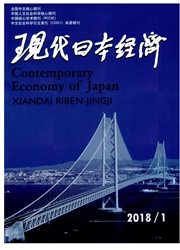

 中文摘要:
中文摘要:
本研究根据世界投入产出数据库中的相关数据,从双边贸易总体、最终品和中间品贸易、不同行业贸易3个层面,对1995-2009年中日双边贸易中两国所使用的国内生产要素情况进行了分析。结果表明:从附加值贸易的角度来看,虽然中日两国在双边贸易中所使用的资本、高技术劳动、中技术劳动和低技术劳动这4种国内生产要素的绝对数量不断增加,但中国对日出口的产品主要是由资本和低技术劳动来完成的,日本对华出口主要是由资本和中技术劳动这两种生产要素来完成的;日本对华出口所使用国内生产要素中高技术劳动占比相对中国对日出口所使用国内生产要素中高技术劳动占比要高,且这种情况在中日双边制造业贸易和最终品贸易中表现得尤为明显,说明虽然从贸易流量上看中日双边贸易以产业内贸易为主,但实际上中日双边贸易仍是以基于比较优势的传统贸易方式来实现的。
 英文摘要:
英文摘要:
According to the World Input - Output Database, this paper is going to analyze decomposi- tion of the domestic production factors in Sino - Japanese bilateral trade from 1995 to 2009. The pa- per involves three analytical perspectives like the overall bilateral trade, the trade of final goods and intermediate goods, and the trade of different industries. The results of the study are listed as fol- lows. From the perspective of value - added in trade, we find that both China and Japan have in- creased the absolute amount of capital, high technology labor, middle technology labor and low tech- nology labor that have been used in the bilateral trade. In addition to the common ground there are al- so something different. Firstly, the production of the commodities that China has exported to Japan is completed under the major function of capital and low technology labor. But for the commodities that Japan has exported to China, the production is completed under the major function of capital and middle technology labor. Secondly, in regard to the ratio of high technology labor to total domestic factors, Japan's is much higher than China's. This situation is especially obvious in Sino - Japanese bilateral trade of manufacturing industry and final products. To sum up in conclusion, it means that Sino - Japanese bilateral trade is still based on the comparative advantage achieved by the traditional way, despite the fact that intra - industry trade has been playing a dominant role from the point of view of trade flows.
 同期刊论文项目
同期刊论文项目
 同项目期刊论文
同项目期刊论文
 期刊信息
期刊信息
